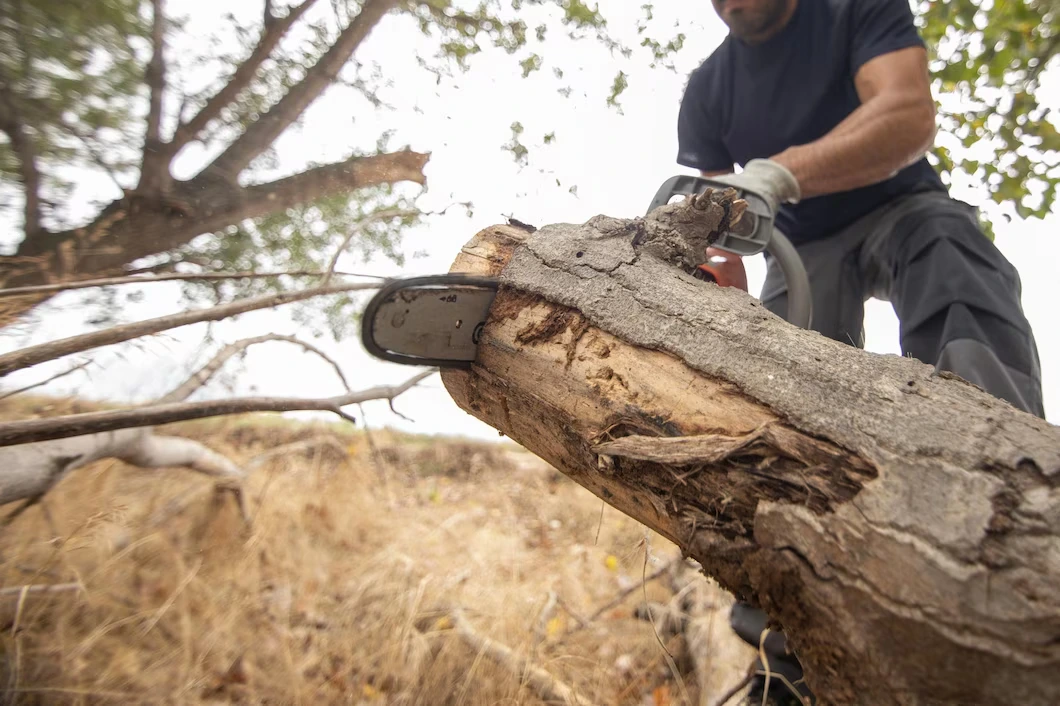A crackling fire is a perfect way to ward off the chill of winter, but it requires more than just throwing a few logs into the fireplace. Knowing the best techniques for cutting and splitting your firewood is important to get the most out of your firewood. Firewood cutting and splitting techniques are important to understand because they can help you save time, money, and energy when preparing firewood for burning.
You can quickly and efficiently prepare your firewood for a roaring fire with the right tools and techniques. However, it’s important to be aware of safety considerations and potential risks when cutting and splitting firewood. If you’re unfamiliar with the process, it’s best to consult a professional for advice.
In this blog post, we’ll explore the best firewood cutting and splitting practices. We’ll discuss the tools and techniques involved and explain why these are important.
1. Use a chopping block
A chopping block provides a flat surface that allows you to swing your axe or maul with greater accuracy and control. This means you’ll be less likely to miss your target and hit your foot or another unintended object.
But a chopping block isn’t just about safety. It can also help extend the life of your cutting tools. When chopping wood on the ground, it can become damaged or dull every time your blade hits the dirt. Using a chopping block provides a layer of protection between your blade and the ground, which can help keep it in better condition for longer.
2. Get prepped
The first step to getting prepped for cutting and splitting firewood is to create a safe and efficient workspace. This means finding an area away from other people, buildings, and structures. You should also ensure plenty of space for swinging the ax or using other tools without branches or distractions affecting your range of movement.
It’s also important to ensure you have a solid and level surface to work on. This will help prevent accidents and injuries as you work. You use a sawhorse or other support to keep the wood stable if you’re working on uneven ground.

3. Aim close to the edge
It’s a common mistake to try and chop wood in the center of the log, but this is often the strongest part of the wood. Instead, it’s best to aim for the edge of the log, where the wood is typically softer and easier to chop. You can make quick work of even the toughest logs by striking the wood at right angles to the wider growth rings, close to the bark.
But what about the experienced axe users who apply a glancing technique that chips off edge pieces? While this technique can be effective, taking extreme care is important. Chipping off edge pieces can cause injuries and damage the axe’s cutting edge, making it less effective in the long run.
To avoid injury and damage to your axe, it’s best to stick to the traditional method of aiming close to the edge of the log. Doing so will allow you to split wood more efficiently and with less effort. Plus, you’ll be able to avoid the frustration of trying to chop through the toughest part of the log.
4. Take off segments
One of the most important things to remember when cutting a large round is to make the first complete cut through the middle. This can be tricky, especially if the wood is particularly hard or if you are using a manual saw. However, making that first cut as straight and clean as possible is crucial. This will make it easier to make subsequent cuts and will ensure that your firewood is cut to the right size.
Once you have made that first cut, it can be tempting to continue cutting the remaining pieces through the middle. However, there are more efficient ways to cut firewood. Instead, work on chopping off wedges from the edge of the round. This will make it easier to split the wood into smaller pieces and will help you avoid any knots or other obstacles in the wood.
5. Use a quality splitting tool
It’s important to choose a splitting tool that is comfortable for you to use. If the tool is too heavy or light, it can be easier to control, leading to an efficient and safe splitting process. Additionally, ensure the tool is the right size for the logs you’ll be splitting. A tool that is too small may not be able to handle larger logs, while a tool that is too large may be difficult to maneuver and control.
Another important factor to consider when choosing a splitting tool is the quality of the blade. A dull or damaged blade can make the splitting process much more difficult and even dangerous. Look for a tool with a high-quality, sharp blade designed to last. Buy best quality dry birch wood 40l sacks online.
8. Take breaks
Cutting and splitting firewood requires a lot of energy, and it’s easy to get tired. When you work for an extended period without taking breaks, your body will become fatigued, and you won’t be able to work at your best. Taking breaks allows you to rest and recharge to return to work with renewed energy and focus.
Overworking can cause muscle strain and back pain, leading to injuries. When you’re tired, you’re more likely to make mistakes, such as inaccurate swings, which can also result in injuries. Taking breaks allows your muscles to rest and recover, reducing the risk of injuries.
When you’re tired, your accuracy can suffer, and you may end up with unevenly sized firewood. Taking breaks can help you maintain your focus and precision, resulting in accurately sized firewood.
9. Use a chainsaw
Using a chainsaw for firewood cutting and splitting may seem counterintuitive, but it can be a highly effective method if done correctly. With a sharp chain and some basic techniques, you can quickly and safely turn logs into firewood without breaking your back or wasting too much time.
Safety is one of the most important things to remember when using a chainsaw for firewood cutting and splitting. Chainsaws are powerful tools that can cause serious injuries if not handled properly. Before starting, ensure you have the right safety gear, such as eye and ear protection, gloves, and chaps. Also, ensure you know how to start and operate your chainsaw, and only use it if you’re energized and focused.
These are all about best Firewood Cutting Techniques.
Wrapping up
Understanding the best practices for cutting and splitting firewood is essential for anyone who wants to get the most out of their firewood and save time, money, and energy. You can quickly and efficiently prepare your firewood for a cozy fire using the right tools and techniques. However, it’s important to consider safety considerations and consult a professional if you need clarification. With the tips outlined in this blog post, you can prepare your firewood like a pro and enjoy a crackling fire all winter.
Thank you for visiting getamagazines.com.











